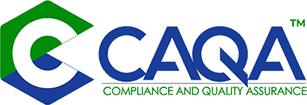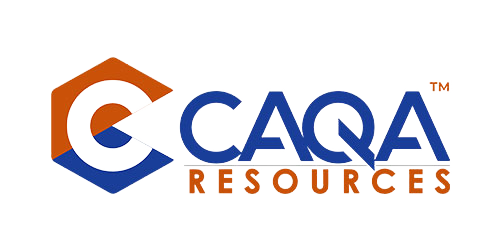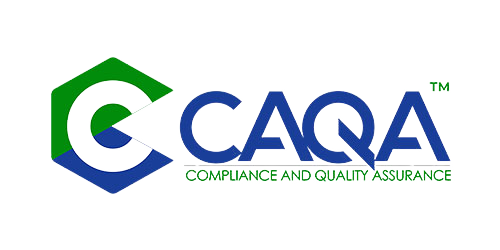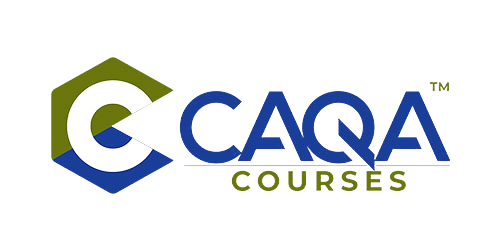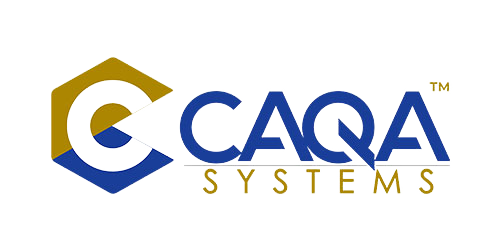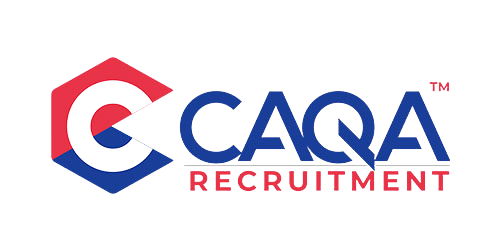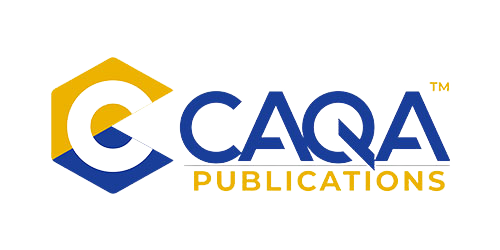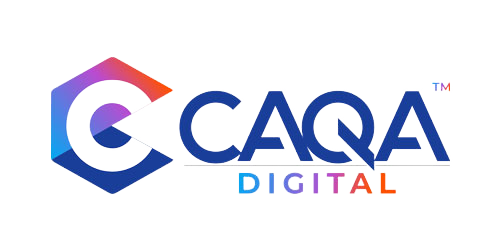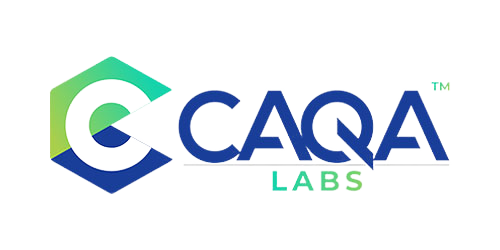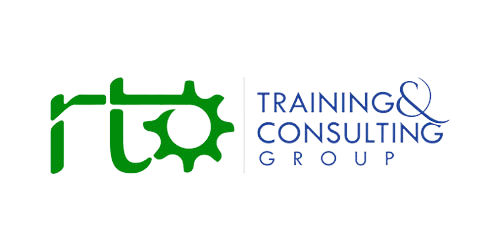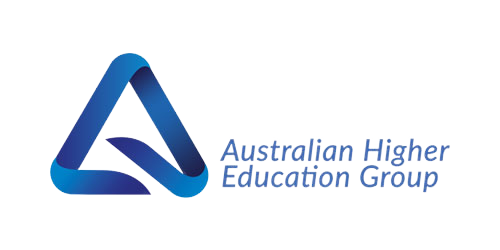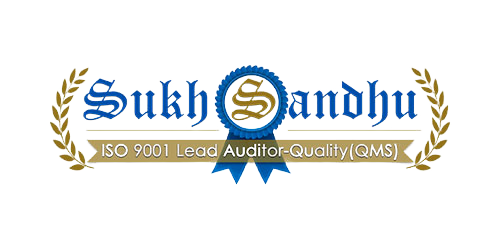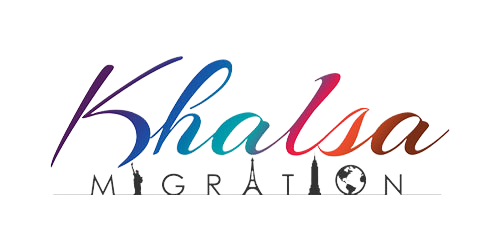Understanding ASQA and Its Role
The Australian Skills Quality Authority (ASQA) plays a pivotal role in maintaining and enhancing the standards and reputation of Australia's Vocational Education and Training (VET) sector through its comprehensive and meticulously structured audit processes. Established in 2011 as a response to the need for a national regulator, ASQA's overarching mission is to safeguard the quality, integrity, and credibility of VET by ensuring that training providers meet and maintain rigorous national benchmarks.
ASQA's responsibilities are multifaceted and far-reaching. Primarily, it is tasked with registering and monitoring Registered Training Organisations (RTOs), which form the backbone of Australia's VET sector. This involves conducting regular audits, both scheduled and unannounced, to assess the compliance of RTOs with the established national standards. These audits examine various aspects of an RTO's operations, including curriculum design, assessment practices, trainer qualifications, and student support services.
In addition to its regulatory functions, ASQA also plays a crucial investigative role. The authority is empowered to investigate potential non-compliance issues, which may arise from complaints, industry concerns, or patterns identified through data analysis. These investigations are thorough and impartial, aimed at uncovering any practices that may compromise the quality of training or the validity of qualifications issued.
When RTOs are found to be non-compliant or failing to maintain acceptable standards, ASQA has the authority to take enforcement action. This can range from issuing improvement notices and imposing conditions on an RTO's registration to more severe measures such as suspending or cancelling registration. The severity of the action depends on the nature and extent of the non-compliance, as well as the RTO's history and willingness to rectify issues.
By scrutinising how RTOs deliver their training and assessment services, ASQA plays a crucial role in fostering public trust in VET qualifications. This rigorous oversight reassures employers that graduates possess the skills and knowledge required for their respective industries. Similarly, it gives students confidence that the qualifications they pursue are recognised and valued in the job market.
ASQA's work extends beyond individual RTOs to encompass the entire VET ecosystem. The authority collaborates with industry bodies, government agencies, and educational institutions to ensure that training packages and qualifications remain relevant and aligned with evolving industry needs. This collaborative approach helps to maintain the currency and practicality of VET qualifications in a rapidly changing job market.
Furthermore, ASQA contributes to the continuous improvement of the VET sector by providing guidance and support to RTOs. This includes publishing resources, conducting workshops, and offering consultative services to help providers understand and meet compliance obligations. By fostering a culture of quality and continuous improvement, ASQA aims to elevate the overall standard of vocational education and training in Australia.
ASQA's role is integral to the success and credibility of Australia's VET sector. Through its regulatory, investigative, and supportive functions, ASQA ensures that vocational education and training in Australia meets high standards of quality and relevance. This not only benefits individual students and employers but also contributes to the broader economic and social development of the nation by producing a skilled and competent workforce.
Formation and Mission of ASQA
ASQA’s formation responded to a national imperative for consistent and robust regulation of vocational education and training. Before ASQA’s establishment, oversight varied across states and territories, leading to possible inconsistencies in compliance expectations. By centralising regulatory functions, ASQA brings uniformity to VET governance. Its primary responsibilities include registering RTOs under the Australian Qualifications Framework (AQF), monitoring their ongoing compliance through routine and risk-based audits, examining complaints related to potential non-compliance, and enforcing sanctions or conditions on providers that do not uphold the prescribed standards. These multifaceted activities underscore ASQA’s essential function in bolstering the credibility of vocational qualifications and maintaining the overall health of Australia’s VET ecosystem.
Regulatory Backbone: The VET Quality Framework
The foundation of ASQA’s regulatory work lies in the VET Quality Framework, which encompasses the Standards for Registered Training Organisations (RTOs) 2015, Fit and Proper Person Requirements, Financial Viability Risk Assessment Requirements 2021, Data Provision Requirements 2020, and the Australian Qualifications Framework. These components collectively define the expectations for RTOs, covering a spectrum that includes trainer competencies, administrative processes, ethical marketing, and the provision of accurate data for regulatory oversight. In an ASQA audit, an RTO’s operations are assessed against these requirements to ensure that the provider remains consistent in delivering well-structured, relevant, and high-quality training. RTOs must demonstrate adherence to all facets of the VET Quality Framework if they wish to maintain their registration and operational status.
The Purpose and Scope of ASQA Audits
ASQA audits aim to ensure that learners receive industry-relevant education and that VET credentials preserve their value and recognition in the job market. When ASQA conducts an audit, it looks beyond mere procedural compliance and examines how an RTO’s practices shape student outcomes. One core objective is compliance verification, which confirms whether RTOs consistently align with the VET Quality Framework. Another major goal is student protection, which involves identifying any shortcomings or discrepancies that might disadvantage learners or undermine their educational experiences. By establishing and reinforcing qualification integrity, audits help maintain public confidence in Australian VET credentials. ASQA also aims to promote continuous improvement, where areas of potential enhancement are identified so that RTOs can refine operations for the benefit of students, staff, and industry partners alike.
Common Triggers for an ASQA Audit
Multiple circumstances can lead to an ASQA audit. Initial registration audits occur when a provider applies to become an RTO, ensuring the organisation is prepared to meet national standards prior to offering qualifications. Periodic renewal of registration audits verifies that existing RTOs continue to comply over time, allowing ASQA to catch potential drift from best practices. A change of scope audit becomes necessary if an RTO intends to offer new qualifications or expand to different industry areas, ensuring that the provider’s capabilities match the complexities of the proposed courses. Complaints or concerns lodged by students or other stakeholders can lead to investigations that, if substantiated, trigger a targeted audit focusing on the issues raised. ASQA also adopts a risk-based approach to identify higher-risk providers by analysing complaint trends, enrolment anomalies, or prior compliance failures, allowing the regulator to allocate resources more efficiently and intervene where non-compliance is most likely.
The ASQA Audit Process
ASQA has shifted towards a risk-based, outcome-focused audit model that prioritises real-world implementation over policy statements. Although each audit has distinctive features, three key phases typically form its structure: Pre-Audit, On-Site Audit, and Post-Audit. The Pre-Audit Phase involves a risk assessment where ASQA examines complaints history, the provider’s track record, funding sources, and data from other agencies. Based on this intelligence, the scope of the upcoming audit is decided. Providers may receive varying notice periods, particularly when the regulator deems a provider to be high-risk or has received significant complaints. During the Evidence Gathering stage, ASQA reviews a wealth of materials, including the RTO’s website, social media profiles, and external data, to gain insights into how the organisation operates and what students experience.
The On-Site Audit Phase typically begins with an opening meeting where auditors clarify the purpose, scope, and process of the audit. The central activity is Evidence Collection, which includes interviews with trainers, assessors, and compliance personnel to determine whether policies match day-to-day delivery, along with documentation reviews that scrutinise training strategies, student records, and staff qualifications. Observations of practical training sessions or interviews with students offer further evidence about the actual quality of teaching and assessment. The auditors subsequently analyse these findings against the VET Quality Framework to gauge compliance. A closing meeting then allows the audit team to share preliminary insights with RTO representatives.
In the Post-Audit Phase, ASQA compiles its findings into a draft report. The RTO usually has around twenty working days to respond, offering clarifications, additional evidence, or commitments to rectification if any non-compliances are identified. ASQA then issues a final report, which may confirm full compliance or outline non-compliances requiring remedial actions within certain deadlines. The most serious cases can result in sanctions, conditions, or even suspension of registration if the provider fails to meet the required standards. Follow-up audits or checks may be scheduled to verify that the rectifications have been effectively implemented.
Key Areas of Focus in ASQA Audits
While ASQA tailors its audits to each RTO’s context and risk level, certain aspects regularly receive scrutiny. Training and assessment strategies are inspected to confirm that they reflect real industry practices and cater to various learner needs. Trainer and assessor qualifications are reviewed to ensure these staff hold the necessary credentials and retain current industry knowledge. Assessment practices must be valid, reliable, and fair; auditors often examine completed student assessments for consistent quality and alignment with stated requirements. Student support services are another major focus, particularly how RTOs handle language, literacy, and numeracy issues or personal challenges that might hamper study success. Marketing and recruitment materials must accurately portray the courses offered, fee structures, and potential job outcomes. Record keeping is also crucial, so auditors check whether the provider systematically maintains and updates enrolment data, progression details, and completion records. Governance and administration come under scrutiny as well, including decision-making processes, resource allocation, and organisational structures that support compliance. Finally, ASQA confirms whether providers maintain ongoing engagement with employers and industry advisory bodies to ensure their training remains relevant and up to date.
Preparing for an ASQA Audit
Strategic planning and systematic reviews enable RTOs to approach audits with confidence. Internal audits, guided by the Standards for RTOs 2015, are an effective way for providers to identify and address potential compliance gaps ahead of an external assessment. Comprehensive documentation is essential; RTOs should keep policies, procedures, and student records not only current but also easy to access. Clear and methodical records demonstrate that the RTO actively manages its obligations. Staff engagement is also pivotal, as every individual contributes to compliance. Trainers, assessors, and administrative teams must understand their responsibilities and be prepared to answer auditor queries about how tasks are performed. Soliciting student feedback can help RTOs detect and address issues early while keeping abreast of industry developments ensures that training remains aligned with evolving technological or regulatory changes. ASQA resources such as webinars, guidelines, and workshops offer insights into best practices and emerging audit trends. Where in-house expertise might be limited, enlisting external compliance consultants can provide a neutral perspective on the RTO’s readiness for an audit.
Navigating Non-Compliance Findings
Even well-prepared RTOs may face non-compliance issues. The key is responding effectively rather than defensively. It is essential to carefully read the audit report and clarify any ambiguities with ASQA if points seem unclear. Developing a rectification plan that identifies each shortcoming, the root cause of the issue, and a timetable for corrective action can reassure ASQA that the RTO is committed to genuine improvement. This plan should outline who is responsible for each change and how the RTO will track and measure the success of modifications. Systemic changes, such as revising trainer induction procedures or updating assessment tools, can prevent repeat non-compliance in future. Submitting robust documentation that proves the implementation of corrective measures shows ASQA that the provider is serious about rectifications. RTOs also need to consider whether any remedial actions are required to protect current students, which might involve re-assessment or providing additional resources if earlier training or assessment was found deficient.
The Importance of Continuous Improvement
Audits are not merely a compliance hurdle but rather an opportunity for RTOs to engage in continuous improvement. Providers that proactively refine teaching methods, enhance student support, and consult regularly with industry often emerge stronger from the audit process. Strengthening the quality of training and assessment can lead to better student outcomes, improved completion rates, and favourable employer perceptions, which in turn boost the RTO’s standing in the VET market. Adopting continuous improvement involves regularly updating procedures, offering ongoing professional development for trainers, and seeking feedback from stakeholders. RTOs that cultivate this mindset typically experience fewer compliance issues because they remain vigilant about evolving standards and adapt their practices accordingly.
The Future of ASQA Audits
ASQA’s audit framework will continue to evolve in response to changes in educational technology, labour market dynamics, and sector-wide shifts. A major emphasis is likely to be on student outcomes, with audits delving deeper into learner completion rates and post-study employment or further education pathways. Data-driven risk profiling is on the rise, where advanced analytics identify patterns of potential concern, such as sudden enrolment spikes or abnormally short completion times. Enhanced collaboration between ASQA, state funding bodies, and other agencies aims to reduce audit overlap and streamline regulatory oversight. As more RTOs implement online or blended delivery, ASQA will adapt by closely examining virtual learning platforms, e-assessment processes, and academic integrity measures to ensure they uphold standards comparable to traditional classroom-based delivery. The concept of provider self-assurance may also gain traction, whereby high-performing RTOs demonstrate internal quality systems robust enough to justify less frequent external interventions.
Common Audit Mistakes: Lessons from the Field
Even after thorough preparation, RTOs can make missteps that undermine audit outcomes. One prevalent error is falling into the “cut and paste syndrome,” where providers recycle old documents or generic text without aligning them to current contexts. This reduces credibility and can create contradictions in the evidence provided. Another mistake is leaving auditors alone with documentation that lacks explanation or structure, increasing the risk that important context is missed or misinterpreted. Some RTOs fail to seek clarity about audit requirements, remaining silent and providing incomplete or irrelevant evidence, which can prompt further scrutiny. Others overemphasise filling out forms instead of refining actual processes, resulting in superficial compliance that auditors are likely to detect. Lastly, underestimating the significance of an audit by devoting inadequate time or resources to preparation can lead to disorganised presentations and heightened regulatory pressure.
How to Leverage Audits for Long-Term Success
By treating audits as a developmental milestone rather than a mere regulatory checkpoint, RTOs can strengthen their foundational systems. Identifying systemic gaps and addressing them systematically helps fortify internal structures and ensures consistency in delivering high-quality training. Reinforcing a culture of quality among staff, fosters shared ownership of compliance standards. This, in turn, elevates the entire organisation’s focus on teaching excellence, learner satisfaction, and operational integrity. Positive audit results reassure employers and prospective students that the RTO’s qualifications deliver the skills and competencies promised. Engaging staff in the audit process, from policy revisions to training on new regulations, also builds internal capabilities. As providers meet or surpass ASQA’s standards, they may expand their scope of delivery or experiment with new training methods, knowing they have the underlying systems to maintain compliance and quality.
ASQA audits play a vital role in safeguarding the credibility of Australia’s VET sector by rigorously examining RTOs through a risk-based lens. From initial registration checks to complaint-driven or renewal audits, these processes unveil both solid practices and areas requiring attention. For RTOs that embrace audits as an avenue for introspection, continuous improvement, and collaborative dialogue with auditors, the outcomes can be transformative. Meticulous preparation, ongoing staff engagement, and proactive communications about compliance requirements can pave the way for a positive audit experience.
Although some non-compliance may be inevitable in a complex operational environment, the willingness to develop robust rectification strategies and evidence-tangible solutions can significantly reduce the likelihood of sanctions. Audits also present an avenue for RTOs to examine student outcomes closely, ensuring that teaching, assessment, and support align with real-world industry requirements. Looking to the future, audits are expected to place an even greater emphasis on learner success, data analytics, and innovative delivery modes. RTOs that recognise this direction and adapt proactively will be well-positioned to thrive, thereby strengthening Australia’s VET sector and contributing to a more skilled and adaptable workforce.
Frequently Asked Questions
How does ASQA’s audit process contribute to maintaining quality in the VET sector?
ASQA’s audit process evaluates whether Registered Training Organisations (RTOs) deliver training and assessment aligned with national standards. By examining real-world practices rather than just policy documents, these audits identify and address gaps that may affect students, employers, and the wider community. Through ongoing checks and risk-based assessments, ASQA ensures that VET providers continuously update and refine their training, ultimately safeguarding the value of Australian qualifications.
What are the most common reasons an RTO may face an ASQA audit?
While ASQA’s risk-based approach can trigger an audit at any time, there are several common reasons RTOs come under scrutiny. Initial registration audits confirm that a new provider has the appropriate systems in place before they begin operations. Renewal of registration audits ensures that existing RTOs remain compliant over time. Expanding or altering the scope of qualifications offered prompts another review to verify that the RTO can maintain the same quality in the new areas. Additionally, complaints or concerns raised by students or stakeholders can lead to targeted audits focusing on specific potential shortcomings.
Why does ASQA examine both policy statements and day-to-day delivery?
ASQA’s outcome-focused approach ensures that formal documentation accurately reflects what learners actually experience. An RTO might have comprehensive policies, but if these policies are not translated into effective classroom teaching or assessment methods, students and employers risk receiving subpar training. By comparing documentation with tangible evidence such as trainer practices, course delivery, and student feedback, ASQA gains a holistic view of a provider’s compliance and the real impact of its training programs.
In which areas do RTOs often face compliance challenges during audits?
RTOs frequently encounter challenges in aspects like record keeping, where incomplete or disorganised files lead to confusion about student progress or the validity of assessment outcomes. Issues can also arise in trainer and assessor qualifications if staff fail to demonstrate current industry experience or the required certifications. Another recurring problem is the mismatch between stated training strategies and what is actually delivered. An RTO might claim alignment with industry standards on paper, yet the teaching methods and resources used in practice may not meet those standards.
How can RTOs best prepare for an upcoming audit?
Thorough preparation involves proactive internal reviews, where an RTO measures its own performance against the Standards for RTOs 2015. Keeping policies, procedures, and student records well-organised and updated is essential, as is ensuring that all staff understand their responsibilities for maintaining compliance. Gathering and acting on student feedback helps identify potential areas of improvement before an audit occurs. Many RTOs also benefit from using ASQA’s available resources, such as guidelines and webinars, and some enlist external consultants for independent assessments of their compliance status.
What steps should an RTO take if the audit finds non-compliance?
The key is to respond constructively. RTOs should begin by examining the audit report closely and asking for clarification if any points are unclear. Creating a targeted rectification plan is essential. This plan should go beyond patching superficial issues and address underlying causes, whether that means updating policies, retraining staff, or revising assessment methods. Documenting and submitting proof of these corrective actions shows ASQA that the provider takes the findings seriously. If the audit indicates potential negative impacts on existing students, RTOs also need to consider remedial measures such as additional training or re-assessment.
How do ASQA audits encourage continuous improvement rather than mere compliance?
ASQA audits are designed to highlight not only deficiencies but also opportunities for refining and enhancing an RTO’s services. By examining every aspect of training delivery, these audits often reveal procedural gaps or inefficiencies that, once addressed, can significantly improve the learning experience. Providers that treat the audit process as a developmental tool rather than a checkbox exercise tend to adopt a mindset of ongoing quality enhancement. This leads to better learner engagement, stronger ties with the industry, and, ultimately, fewer compliance issues in the future.
What changes might be expected in ASQA’s audit approach in the coming years?
As more providers explore online or blended training models, ASQA will likely adapt its audit frameworks to evaluate digital course delivery and academic integrity protocols. The regulator may further leverage data analytics to identify unusual enrolment patterns, completion times, or funding arrangements that indicate heightened risk. Future audits are also expected to emphasise student outcomes more heavily, looking at metrics such as course completion rates or job placements. Providers demonstrating proven self-assurance measures and robust internal quality systems could experience fewer routine audits if they continuously achieve strong results.
